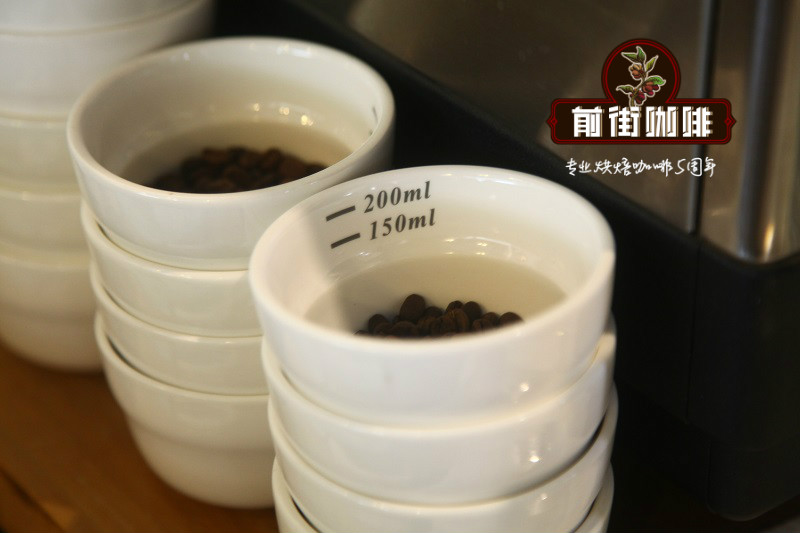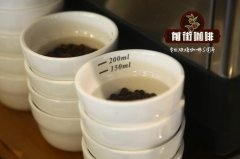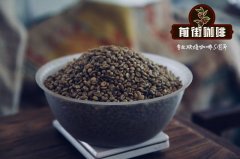Ecuador | Imbana production area, Samora Chinchipe Province, Vidalianomareno | all-water card washing

Professional coffee knowledge exchange more coffee bean information please follow the coffee workshop (Wechat official account cafe_style)
Ecuador | Imbana production area of Samora Chinchipe province Vidalianomareno | wash the flavor of Kaddura and tin pickup in full water?
Ecuador, located between Colombia and Peru in South America, has a long history of growing coffee. When Vitaliano Merino talks about his farm and coffee, it's easy to see his eyes glow. Marino, now 70, not only likes to taste coffee, but also is a coffee farmer and is famous for his excellent quality. He was the champion of the Blacamoros Cup in 2017. The name "Bracamoros Coffee Cup" is a tribute to the aboriginal Bracamoros in the small town of Imbana; in order to improve the quality of boutique coffee in Ecuador, the competition is held to motivate local coffee farmers with incentives. In about two years, Marino's farm will become an organic farm. He is a member of the small Organic Agriculture Export Alliance (Federacion de Peque ñ os Exportadores Agropecuarios Org á nicos; APEOSAE), which encourages him to improve the quality of coffee production, as well as to improve farming methods and farm environment. In terms of long-term goals, Marino can also fulfill her dream if she can grow sugar cane on the farm.
At 1000Km off the west coast of Ecuador, the archipelago directly below the Pacific equator is Ecuador's Galapagos archipelago. The coffee produced here is rare and seldom circulated among ordinary consumers. The archipelago is recognized as a nature conservation area by the United Nations Educational, Scientific and Cultural Organization (USECO). The relevant law expressly stipulates that no chemicals or fertilizers can be used on the whole island, and of course, it is recognized by the OCIA of the United States as the place where organic coffee is produced. The coffee-growing area is concentrated on an island called San Cristobal, with a height of about 800m Mel 1200 m. Due to the island climate, the planting area is covered with thick clouds all the year round and has a dense variety of plants. Galapagos coffee, which is regarded as a treasure by coffee players all over the world, is grown in this primitive and natural super-perfect ecology. According to the relevant literature, French agronomist Don Manual Gobo brought Borubon seeds here in 1875 to open the coffee history of the Galapagos Islands. For a long time, these coffee trees were idle in the forest and allowed them to grow. It was not until 1990 that the Gonzalez-Duche family took over the reorganization. At present, the full name of the manor is "Hacienda El Cafetal San Cristabal". The coffee produced by it is regulated by strict environmental laws and regulations from planting to post-processing. The annual output is about 1150 bags, and the varieties planted are still the "old bourbon" species transplanted that year.
● Loha area
Loha region is located in the south of Ecuador, close to the Andes Mountains, is one of the highest coffee-growing areas in the world, 1450-2000 meters above sea level, is also an important coffee export city in the country. The variety of coffee beans is Tibika, which is treated by washing and mainly planted in natural shade. The local high altitude, climate change and soil quality are very suitable for coffee growth, and there are many excellent planting conditions for growing coffee.
● Galapagos Islands
The waters of Ecuador in South America, directly below the equator, are a mysterious and fascinating group of islands that inhabit the Galapagos islands, and many of the inherent species here are sworn by UNESCO as the "cultural and natural heritage of mankind".
Therefore, the law strictly prohibits the import or use of fertilizers, herbicides, pesticides or all other chemicals.
Certified by OCIA and Rainforest Bird Conservation, the organic shade planting environment, coupled with the unique climatology of the island, creates a fragrant, full-bodied taste.
Galapagos coffee is like a pearl in boutique coffee, with a flower-like aroma and mellow taste. Flowers and fruit-like sweetness and aftertaste, its flavor is not inferior to the famous Jamaican Blue Mountains and Hawaiian Kona Coffee.
Bean seed: Kaddura Caturra, Tibica Typica
Producing area: Imbana district; Zamora Zamora;, Zamora Chinchipe, Samora Chinchipe province
Producer: Vidaliano Marino Vitaliano Merino
Farm area: 15 hectares, 7 hectares growing coffee
Altitude: 1750 m
Treatment method: full water washing Fully Washed
Flavor: nectarine, white grape, guava, milk chocolate tail rhyme
Qianjie recommended cooking:
Filter cup: Hario V60
Water temperature: 90 degrees
Degree of grinding: small Fuji 3.5
Cooking methods: the ratio of water to powder is 1:15, 15g powder, the first injection of 25g water, 25 s steaming, the second injection to 120g water cut off, waiting for the powder bed water to half and then water injection, slow water injection until 225g water, extraction time about 2:00
Analysis: using three-stage brewing to clarify the flavor of the front, middle and back of the coffee. Because V60 has many ribs and the drainage speed is fast, it can prolong the extraction time when the water is cut off.
Important Notice :
前街咖啡 FrontStreet Coffee has moved to new addredd:
FrontStreet Coffee Address: 315,Donghua East Road,GuangZhou
Tel:020 38364473
- Prev

2011 COE Champion Manor | Spring Manor in Huilan, Colombia, wash the flavor of Kaddura?
Professional coffee knowledge exchange more coffee bean information please follow the coffee workshop (Wechat official account cafe_style) 2011 COE champion manor | Columbia Huilan spring manor wash Kaddura flavor? Colombia, currently the third largest coffee producer in the world, after Brazil and Vietnam, first planted commercial beans in the 1830s until coffee accounted for more than half of the total coffee production in the 20th century.
- Next

Ecuador Zumba rumba production area | Aklin Farmers' Association washing iron pickup truck, Kaddura, Bourbon wind
Professional coffee knowledge exchange more coffee bean information please follow the coffee workshop (Wechat official account cafe_style) Ecuador Zumba rumba production area | Aklin Farmers' Association washed iron pickup, Kaddura, bourbon flavor? From a cooperative organization of high-quality coffee raw bean producers in southern Ecuador, a region bordering Peru, the association is a larger coffee producer.
Related
- Detailed explanation of Jadeite planting Land in Panamanian Jadeite Manor introduction to the grading system of Jadeite competitive bidding, Red bid, Green bid and Rose Summer
- Story of Coffee planting in Brenka region of Costa Rica Stonehenge Manor anaerobic heavy honey treatment of flavor mouth
- What's on the barrel of Blue Mountain Coffee beans?
- Can American coffee also pull flowers? How to use hot American style to pull out a good-looking pattern?
- Can you make a cold extract with coffee beans? What is the right proportion for cold-extracted coffee formula?
- Indonesian PWN Gold Mandrine Coffee Origin Features Flavor How to Chong? Mandolin coffee is American.
- A brief introduction to the flavor characteristics of Brazilian yellow bourbon coffee beans
- What is the effect of different water quality on the flavor of cold-extracted coffee? What kind of water is best for brewing coffee?
- Why do you think of Rose Summer whenever you mention Panamanian coffee?
- Introduction to the characteristics of authentic blue mountain coffee bean producing areas? What is the CIB Coffee Authority in Jamaica?

